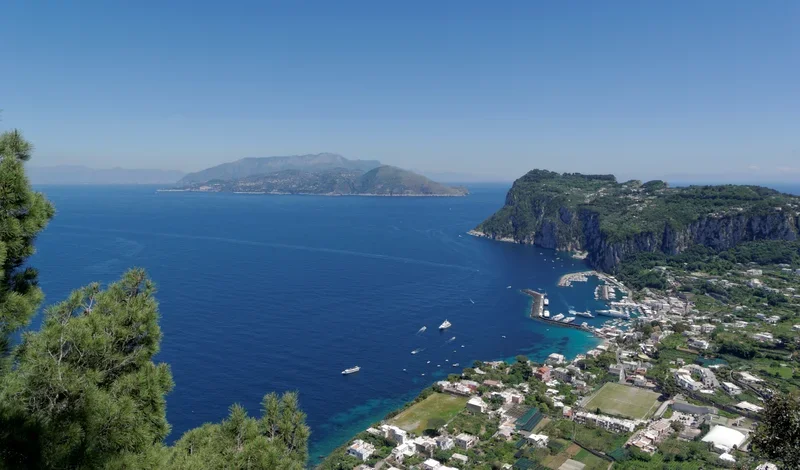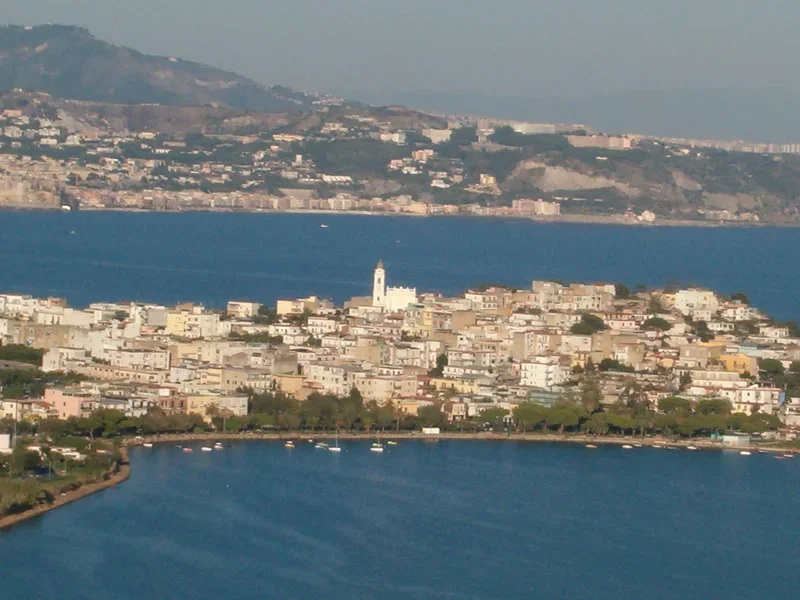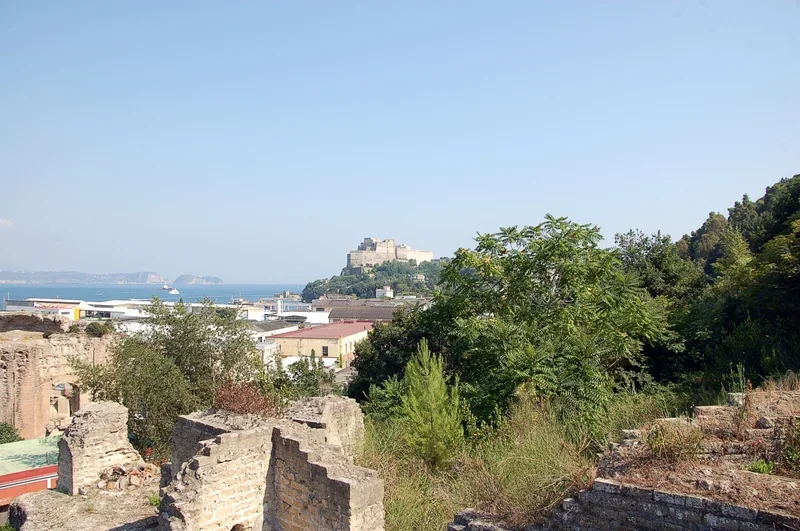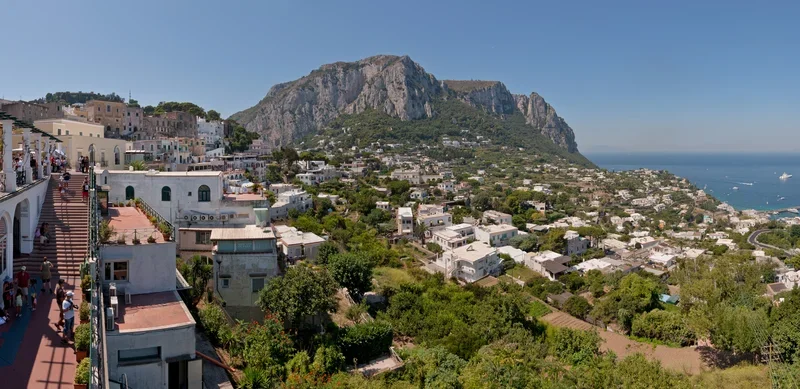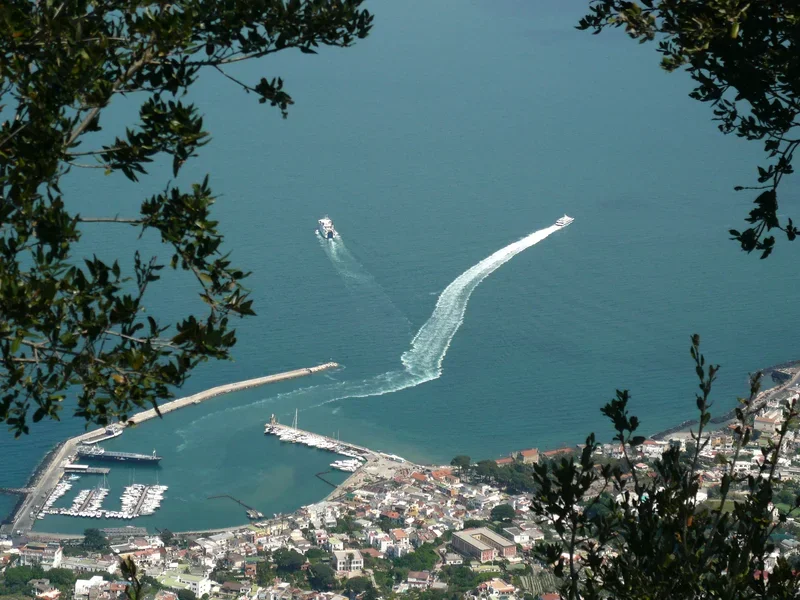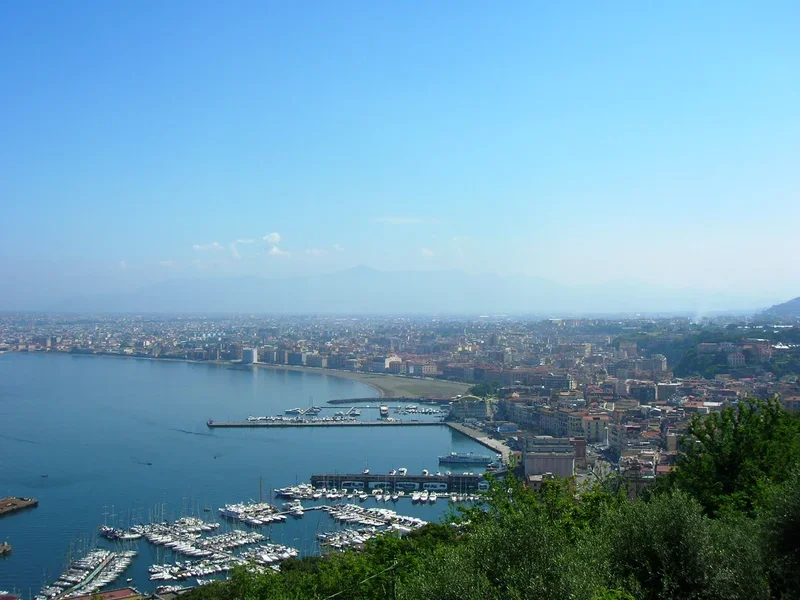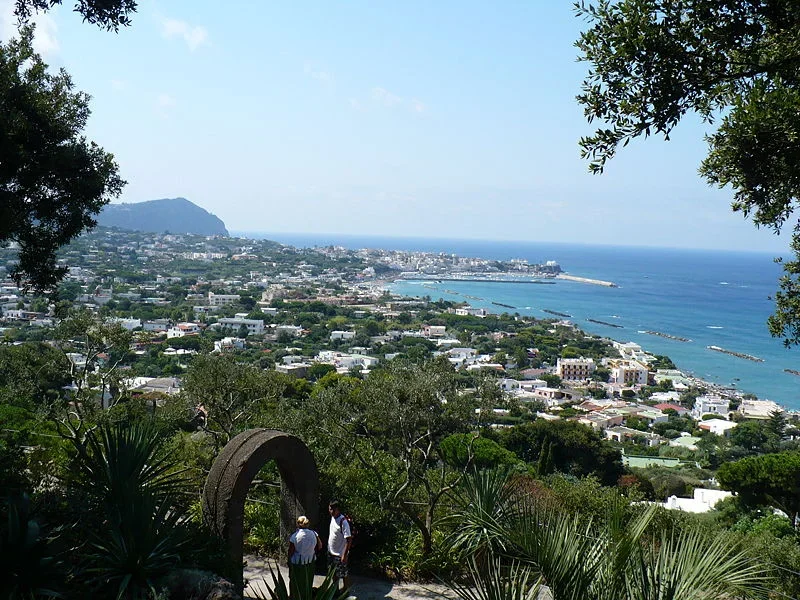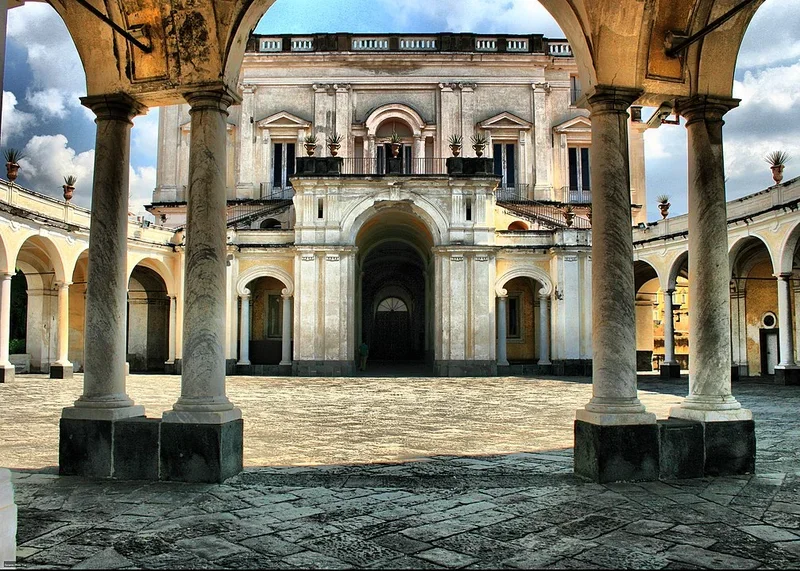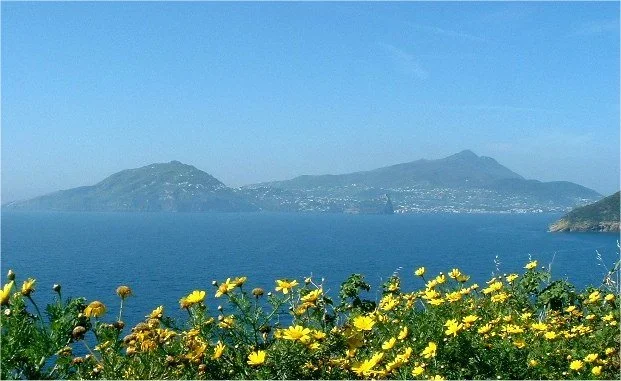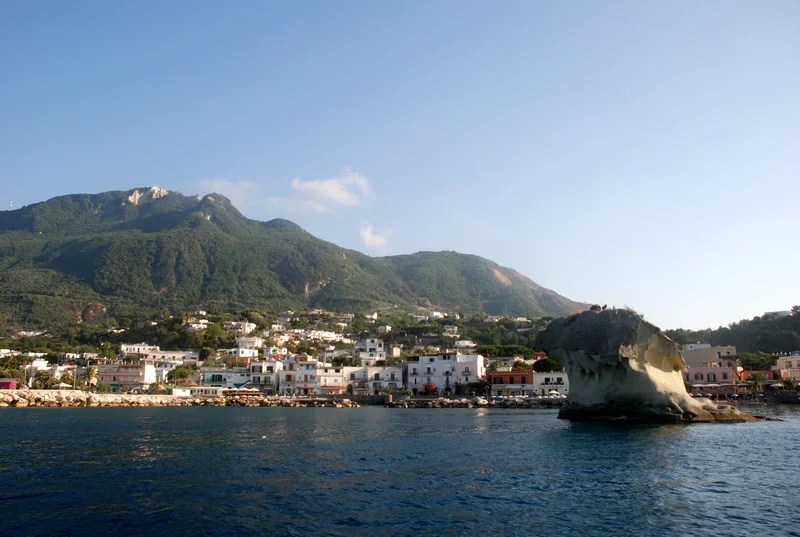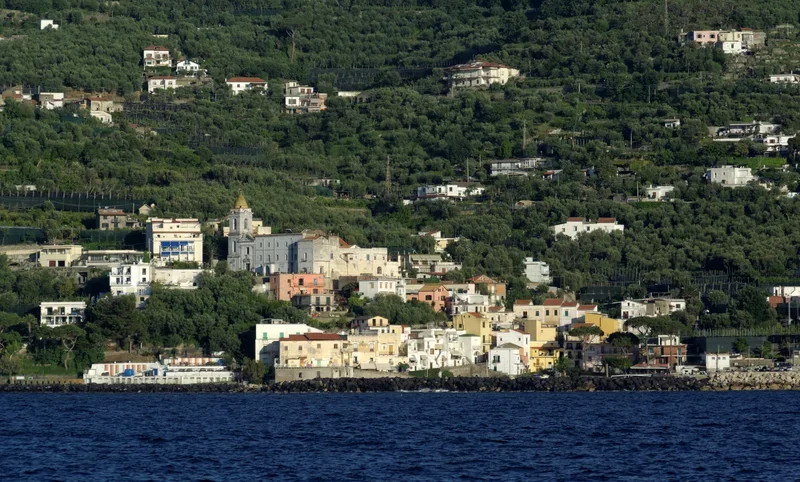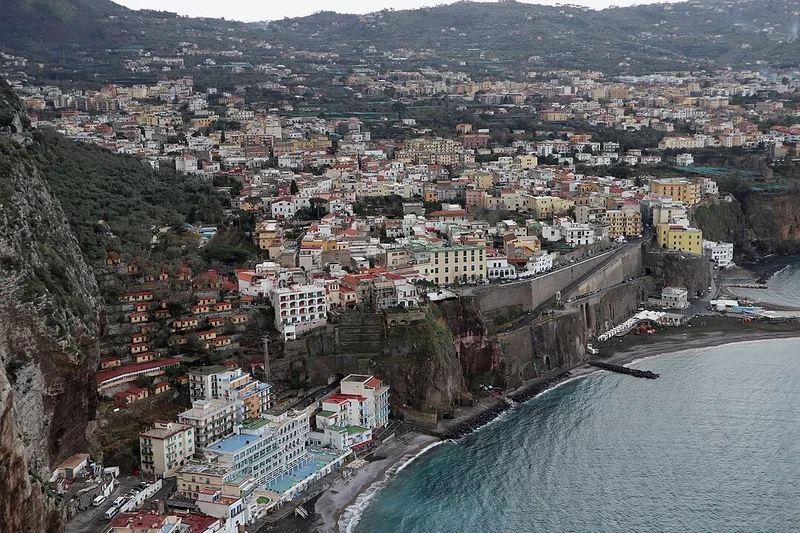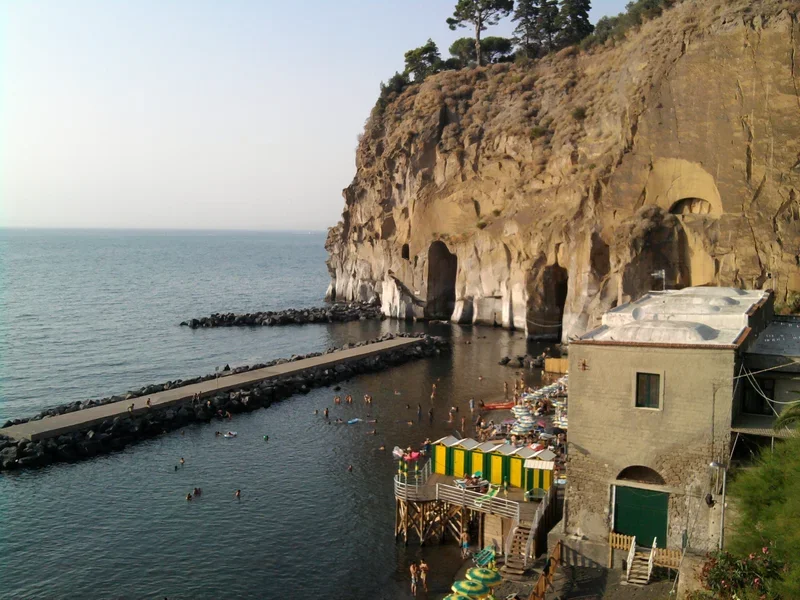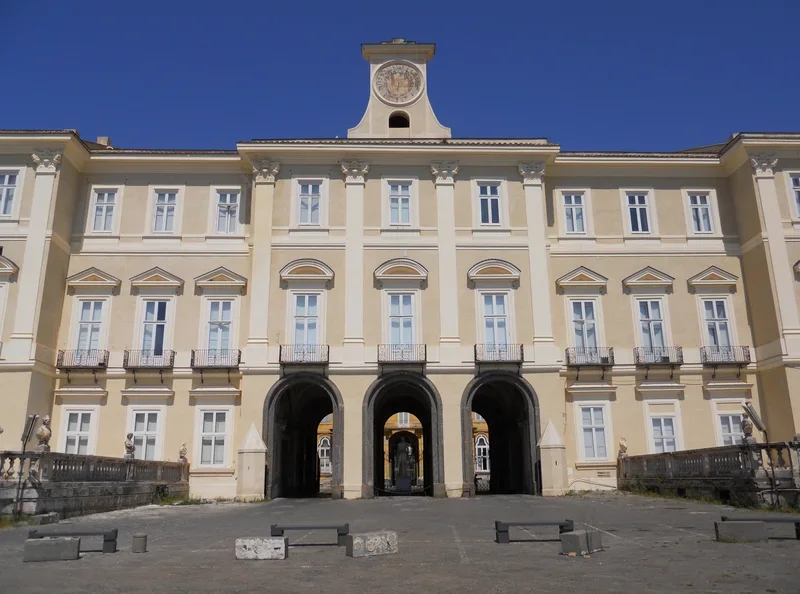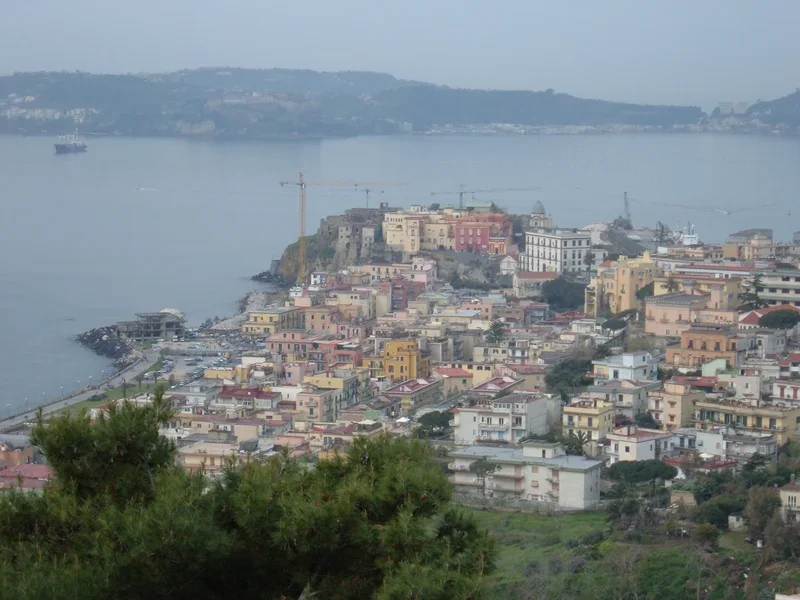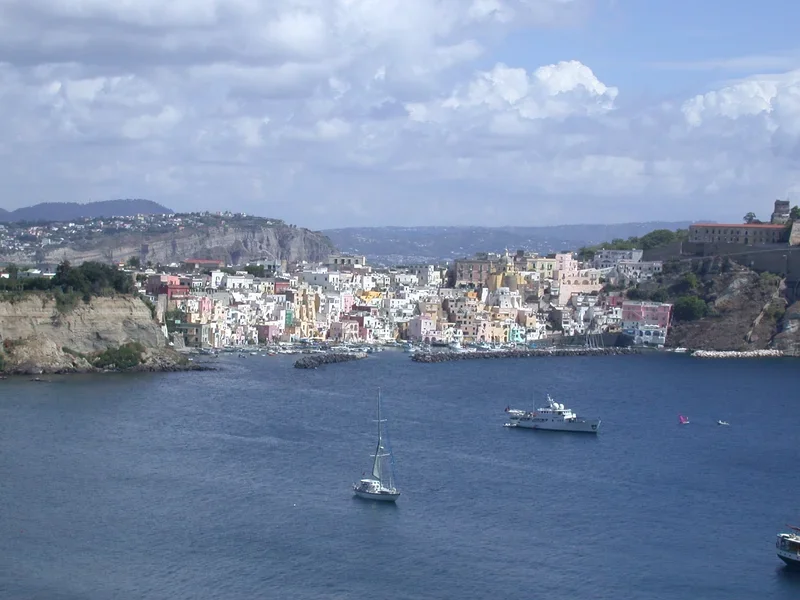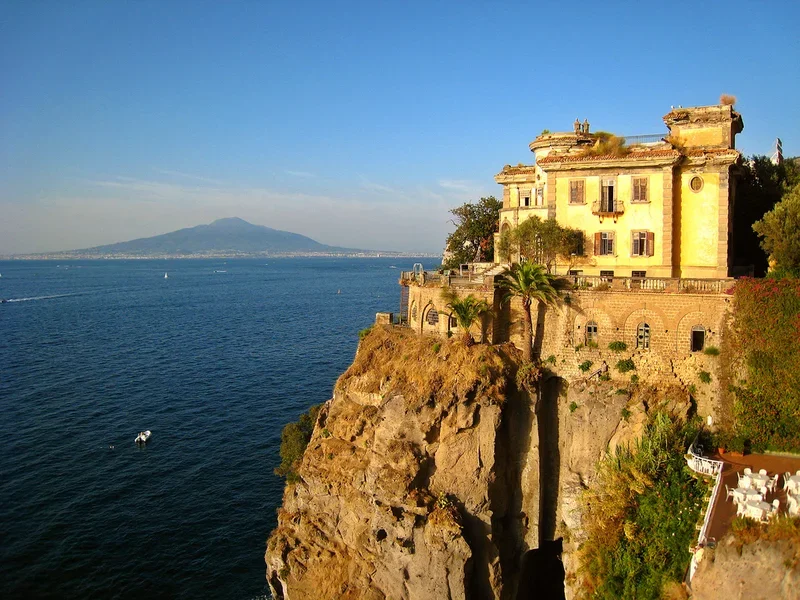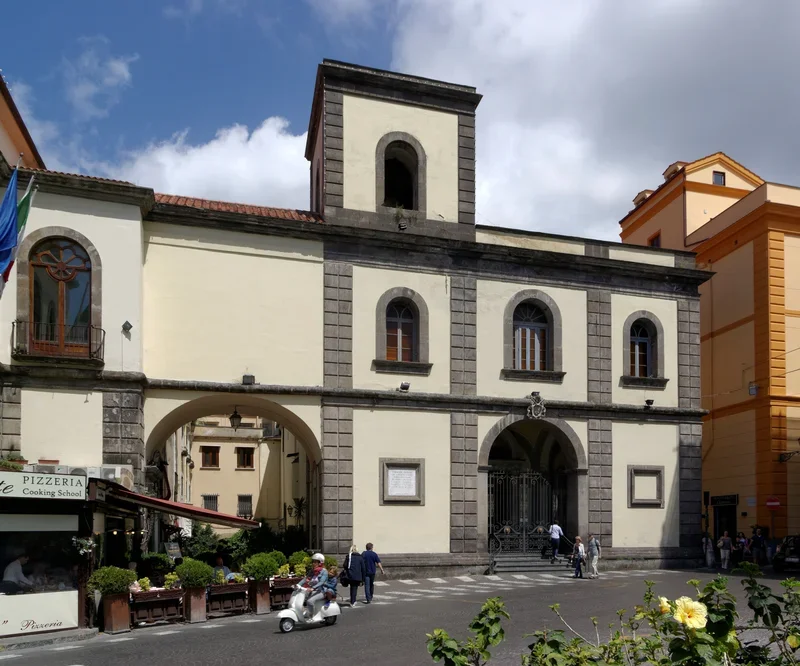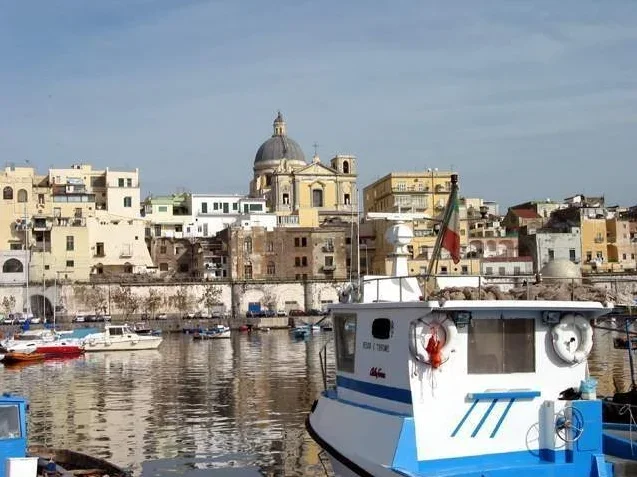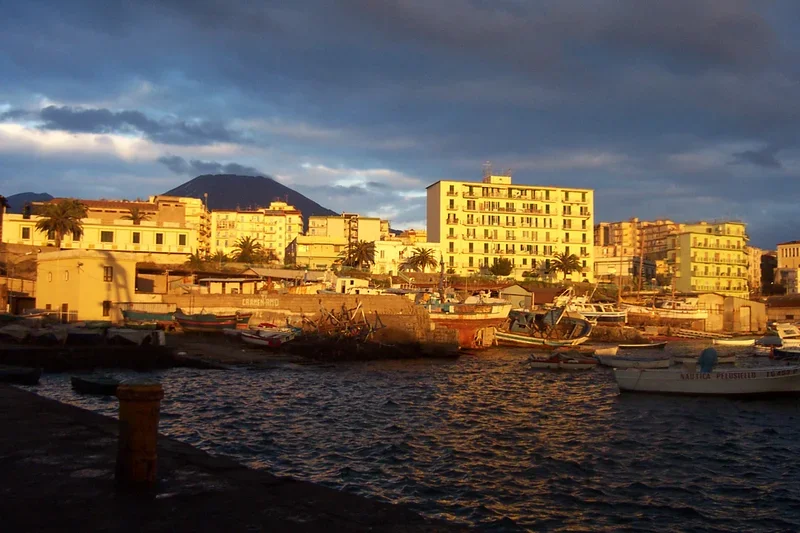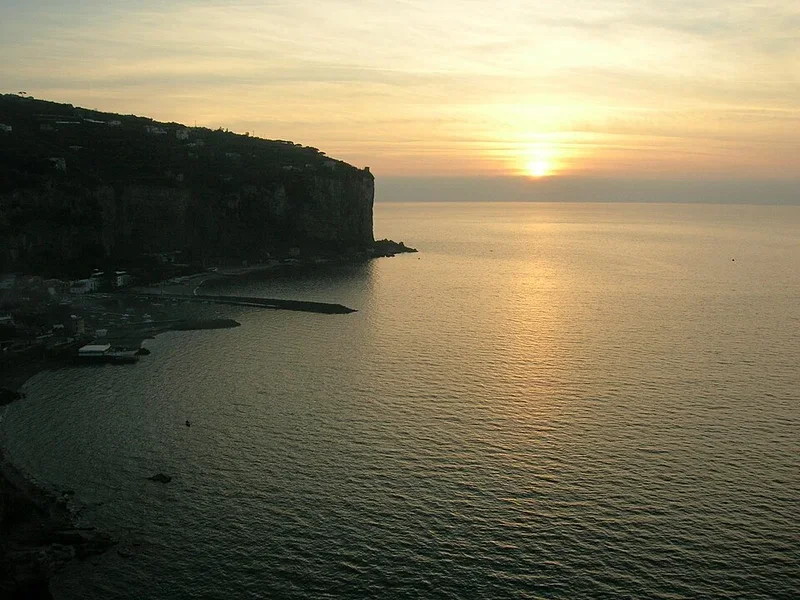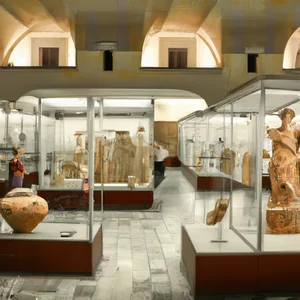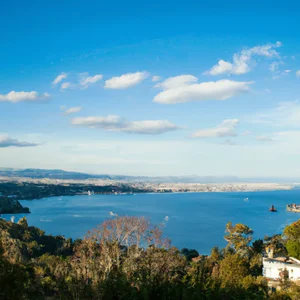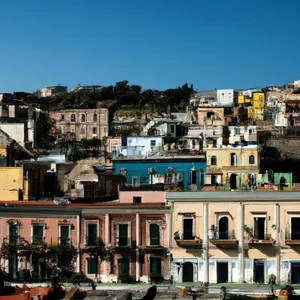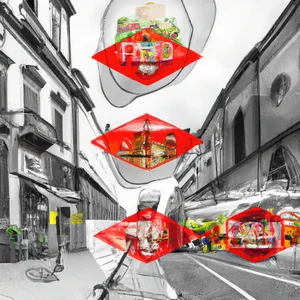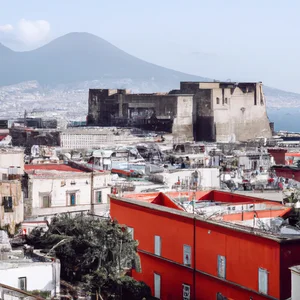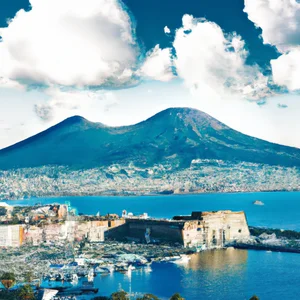Book your experience
Holidays in Naples
Naples, the Neapolitan city, is a gem that shines between Vesuvius and the Gulf, offering visitors a unique experience that blends history, culture, gastronomy and breathtaking landscapes. A holiday in Naples is not just a journey, but an immersion in a vibrant and fascinating world that leaves an indelible mark in the hearts of those who visit it.
The first point of our itinerary is the Historic Center of Naples, declared a World Heritage Site by UNESCO. Here, among narrow alleys and baroque churches, you can feel the authenticity of the city, with its colorful markets and artisan shops that tell stories of ancient traditions. Continuing, the National Archaeological Museum of Naples is a must-see for history lovers. It houses one of the richest collections of archaeological finds in the world, including treasures from Pompeii and Herculaneum.
A walk along the Naples seafront offers a natural spectacle of rare beauty, with the view of the Castel dell’Ovo and Vesuvius rising on the horizon. For those who want to discover the authentic soul of Naples, the Exploration of the Spanish Quarter is an unmissable experience, with its murals, its narrow streets and its lively atmosphere.
We cannot talk about Naples without mentioning its gastronomy. Tasting Neapolitan Pizza is a ritual, a celebration of the simple and genuine flavors that have made this city famous throughout the world.
A short distance from Naples, the Pompeii and Herculaneum Tour allows you to relive ancient history, with the cities buried by the eruption of Vesuvius in 79 AD. For nature lovers, an excursion to Vesuvius offers the opportunity to walk on the volcano that dominates the city and enjoy a spectacular panoramic view.
Another pearl of the Gulf of Naples is the Island of Capri, with its picturesque landscapes and crystal clear waters. A trip to the Island of Capri is an experience of pure relaxation and beauty. Returning to the mainland, the visit to the Royal Palace of Caserta, with its gardens and its opulence, represents a dive into the history and art of the eighteenth century.
Finally, for those who love shopping, Naples offers numerous shopping and local craft opportunities, where it is possible to find unique and typical products, from ceramics to handcrafted nativity scenes.
In summary, a holiday in Naples is a multi-sensory journey through culture, history, nature and flavours. Every corner of the city tells a story, every dish a tradition, and every sight an emotion. Naples is a city that lives and pulsates, ready to welcome every visitor with its warm hospitality.
Visit to the Historic Center of Naples
The Historic Center of Naples represents one of the most fascinating and history-rich areas of the city, so much so that it has been declared a World Heritage Site by UNESCO. Walking through its streets means immersing yourself in a unique atmosphere, where every corner tells a thousand-year-old story.
The Main Roads
One of the most famous streets is Spaccanapoli, a long and narrow street that literally divides the historic center into two parts. Walking along Spaccanapoli, you can admire numerous historic buildings, churches and palaces that testify to the cultural and historical importance of this area.
Another unmissable street is Via San Gregorio Armeno, famous throughout the world for its artisan workshops that create nativity scenes. Especially during the Christmas period, this street becomes one of the main attractions of the city, with tourists coming from every corner of the world.
Churches and Monuments
The historic center of Naples is very rich in churches and monuments of great artistic and historical value. The Church of Gesù Nuovo, with its diamond-shaped ashlar façade, is one of the most representative. Inside, you can admire works of art by artists such as Francesco Solimena and Luca Giordano.
Another obligatory stop is the Duomo of Naples, also known as the Cathedral of San Gennaro. This place is not only a masterpiece of Gothic architecture, but also the center of devotion for the city's patron saint, San Gennaro. Every year, the miracle of blood liquefaction attracts thousands of faithful and curious people.
Squares and Public Spaces
Among the most beautiful and significant squares in the historic centre, Piazza del Plebiscito stands out, one of the largest in Italy. Surrounded by the Basilica of San Francesco di Paola and the Royal Palace, this square is often used for public events and concerts.
No less fascinating is Piazza Bellini, a meeting place much loved by young people and artists. Here there are also the remains of the Greek walls of the city, visible in the middle of the square itself.
Daily Life
The Historic Center of Naples is not only a place of tourist interest, but also a lively area where you can observe the daily life of Neapolitans. Local markets, such as that of Pignasecca, offer an authentic experience among fruit stalls, fresh fish and typical products.
The nightlife in the historic center is equally lively, with numerous bars, restaurants and clubs where you can taste Neapolitan cuisine and listen to live music.
In summary, a visit to the Historic Center of Naples is a journey through the centuries, among art, culture and traditions that make this city unique in the world.
Discover the National Archaeological Museum
The National Archaeological Museum of Naples is one of the most important archaeological museums in the world and a must-see for anyone visiting the city. Located in the heart of Naples, precisely in Piazza Museo 19, this museum is renowned for its extraordinary collection of artefacts from classical antiquity.
The History of the Museum
Founded in 1816, the National Archaeological Museum of Naples has a rich and fascinating history. Originally born as the Royal Bourbon Museum, the institution has undergone numerous changes and expansions over the centuries. The building that houses the museum was originally a cavalry barracks, later transformed into a university and finally into a museum.
The Collections
The museum's collections are vast and include works of art of inestimable value. One of the most famous sections is the one dedicated to the finds of Pompeii and Herculaneum, the Roman cities buried by the eruption of Vesuvius in 79 AD. Here it is possible to admire frescoes, mosaics, sculptures and everyday objects that offer an incredible insight into life in ancient Rome.
Another section of great interest is the Farnese collection, which houses sculptures from the Roman era, including the famous Farnese Hercules and the Farnese Bull. No less important is the Egyptian collection, one of the oldest in Europe, which includes mummies, sarcophagi and various cult objects.
The Secret Cabinet
A particular attraction of the museum is the Secret Cabinet, a collection of erotic art from the excavations of Pompeii and Herculaneum. This section, once accessible only to scholars and people of high status, offers a further perspective on the culture and customs of ancient Rome.
Practical information
The museum is open every day except Tuesday, from 9:00 to 19:30. It is advisable to book tickets in advance, especially during high season. The cost of the full ticket is around 15 euros, with reductions for students, seniors and groups. Furthermore, the museum offers guided tours in different languages, which allow you to deepen your knowledge of the works on display and their history.
Visiting the National Archaeological Museum of Naples is an enriching and fascinating experience, allowing you to immerse yourself in the history and art of antiquity. It is a journey through time that offers a deeper understanding of the cultural roots of Naples and the ancient world.
Walk along the Naples seafront
Introduction
The Naples Seafront is one of the most suggestive and fascinating places in the city. This long avenue, which extends along the coast of the Gulf of Naples, offers spectacular views of the sea, Vesuvius and the surrounding islands, making it an unmissable destination for anyone visiting the city. The walk along the seafront allows you to immerse yourself in the scenic beauty and lively atmosphere of the Neapolitan city.
Main Attractions
During the walk, you will have the opportunity to explore different attractions and points of interest. Here are some of the main ones:
Castel dell'Ovo
Located on a small islet, the Castel dell'Ovo is one of the oldest castles in Naples. Its history dates back to Roman times and today it is a tourist attraction of great importance. From the top of the castle, you can enjoy a breathtaking panoramic view of the Gulf of Naples.
Borgo Marinari
At the foot of the Castel dell'Ovo is the Borgo Marinari, a picturesque fishing village. Here you can find numerous restaurants and bars where you can taste typical Neapolitan cuisine, directly overlooking the sea. It is the ideal place for a relaxing break during your walk.
Communal Villa
The Villa Comunale is a large public park that extends along the seafront. Originally designed in the 18th century, today it is a green area ideal for quiet walks, jogging and outdoor activities. Inside the park, you can visit the Naples Aquarium, one of the oldest scientific institutions in Europe.
Via Partenope
One of the most emblematic streets of the seafront is Via Partenope. This stretch is pedestrian and allows you to fully enjoy the beauty of the landscape without the disturbance of traffic. Some of the city's best hotels and restaurants are located along Via Partenope, offering a high-quality gastronomic and hospitality experience.
Events and Shows
The seafront of Naples is often the scene of cultural, sporting and musical events and events. Throughout the year, you can participate in open-air concerts, food festivals and traditional celebrations, which make the atmosphere even more lively and engaging.
Conclusion
A walk on the Naples Seafront is an unforgettable experience that combines natural beauty, history and culture. Whether you are a nature lover, a history buff or simply looking to relax, the waterfront has something to offer everyone. Don't forget to bring your camera to capture the breathtaking views and special moments of your trip.
Explore the Spanish Quarter
The Spanish Quarter is one of the most fascinating and lively areas of Naples, a place where history, culture and daily life intertwine in a unique way. This neighborhood takes its name from the Spanish troops who were camped here in the 16th century during the period of Spanish rule. Even today, its distinctive character and authenticity make it an unmissable stop for those visiting Naples.
History and Origins
The Spanish Quarter was built in 1536 to house Spanish troops and to control the local population. Its narrow streets and tangled alleys were designed to be difficult to navigate, making it easier for soldiers to keep tabs on residents. Today, these same streets and alleys are part of the neighborhood's charm, offering visitors an authentic glimpse of Neapolitan life.
Architecture and Structure
One of the most distinctive features of the Spanish Quarter is its architecture. The houses are built very close to each other, often with balconies that almost touch, creating an intimate and welcoming atmosphere. The streets are narrow and often steep, with stairs connecting different levels of the neighborhood. This unique structure offers numerous picturesque corners and suggestive views, ideal for memorable photographs.
Art and Culture
The Spanish Quarter is also a vibrant cultural center. Here you can find numerous murals and street art works that adorn the walls of the buildings, making the neighborhood a true open-air museum. Among the most famous works are the murals dedicated to Maradona, an icon not only of football but also of Neapolitan culture.
Daily Life
A walk in the Spanish Quarter offers a unique opportunity to observe the daily life of Neapolitans. Here you can find small grocery shops, greengrocers, artisan shops and trattorias serving traditional dishes. Locals are known for their hospitality and friendliness, and it's not uncommon to be greeted with a smile and a friendly chat.
Gastronomy
The Spanish Quarter is also a paradise for gourmets. Local trattorias and pizzerias offer some of the best Neapolitan specialities, from ragù to pizza, passing through traditional desserts such as sfogliatella and the babà. Don't forget to stop in one of the numerous bars for a Neapolitan coffee, an experience that cannot be missed during your visit.
Exploring the Quartiere Spagnolo is like taking a dive into the beating heart of Naples, a place where every corner tells a story and every street offers a new discovery. Don't miss the opportunity to visit this charming neighborhood during your stay in the city.
Taste Neapolitan Pizza
History and Tradition
The Neapolitan pizza is one of the most famous culinary specialties not only in Italy, but throughout the world. Its history dates back to the 18th century, when the first forms of pizza were prepared in the streets of Naples. The modern version of pizza, with tomato and mozzarella, became popular in the 19th century. The margherita pizza, in particular, was creatively made in honor of Queen Margherita of Savoy and represents the colors of the Italian flag: the red of the tomato, the white of the mozzarella and the green of the basil.
Quality ingredients
One of the aspects that make Neapolitan pizza unique is the use of very high quality ingredients. The flour used is "00" or "0" type, the tomato is of the San Marzano variety, grown on the slopes of Vesuvius, and the mozzarella is buffalo mozzarella from Campania DOP. The extra virgin olive oil must also be first choice, as well as the fresh basil which completes everything.
Traditional Preparation
The preparation of Neapolitan pizza follows a rigorous process. The dough is left to rise for at least 8-24 hours, which gives it its characteristic lightness and digestibility. Cooking takes place in a wood-fired oven at a temperature of approximately 485°C for no more than 90 seconds. This rapid cooking method allows you to obtain a pizza with a puffy and soft edge (cornice), while the center remains thin and tender.
Historical Pizzerias
Naples is dotted with historic pizzerias that are worth a visit. Among the most famous are:
- Antica Pizzeria da Michele: founded in 1870, it is known for its margherita and marinara pizza.
- Sorbillo: one of the most famous pizzerias, famous for the high quality of the ingredients and the skill of the pizza chefs.
- Di Matteo: renowned not only for pizza but also for Neapolitan fried foods.
- Brandi: it is said that the margherita pizza was born here.
Culinary Experience
Tasting Neapolitan pizza in Naples is an experience that involves all the senses. The scent of the wood-fired oven, the intense and balanced flavor of the ingredients, the unique consistency of the dough and the lively atmosphere of the local pizzerias make this experience unforgettable. Don't forget to accompany your pizza with a local craft beer or a good glass of Campania wine to complete the meal perfectly.
Conclusion
Tasting a real Neapolitan pizza is a must for anyone visiting Naples. It is a journey through the history, culture and culinary traditions of this extraordinary city. There is no better way to immerse yourself in the soul of Naples than through the authentic taste of its pizza.
Pompeii and Herculaneum tour
Introduction
A tour of Pompeii and Herculaneum represents one of the most fascinating and history-rich experiences that can be had in the surroundings of Naples. These two archaeological sites offer a unique immersion in the past, allowing visitors to better understand the daily life of the ancient Romans before the devastating eruption of Vesuvius in 79 AD.
Pompeii
Pompeii is perhaps the most famous archaeological site in the world. Covering an area of approximately 66 hectares, this ancient Roman city was buried under a blanket of ash and lapilli, which helped preserve buildings, objects and even human bodies. Among the main points of interest are:
- The Forum: the political, economic and religious heart of the city.
- The House of the Faun: one of the largest and most luxurious homes in Pompeii, famous for its mosaics.
- The Amphitheatre: one of the oldest Roman amphitheaters still in existence.
- The Stabian Baths: magnificently preserved, they offer a detailed vision of Roman thermal culture.
Herculaneum
Herculaneum, although smaller than Pompeii, offers an equally impressive experience. This city was buried under a pyroclastic flow that helped preserve wooden structures, textiles, and food. Among the main attractions are:
- The House of Deer: a luxurious villa with well-preserved frescoes and statues.
- The House of the Wooden Partition: famous for its extraordinary wooden door which is still intact.
- The Suburban Baths: with mosaics and frescoes representing mythological scenes.
Tips for the Visit
To fully enjoy a tour of Pompeii and Herculaneum, it is advisable to dedicate at least a full day to each site. Here are some helpful tips:
- Wear comfortable shoes: the sites are vast and require a lot of walking.
- Bring water and sunscreen with you, especially during the summer months.
- Consider the option of a tour guide: an expert guide can greatly enrich the experience, providing context and historical details.
- Buy tickets in advance: this can help you avoid long queues at the entrance.
Conclusion
Visiting Pompeii and Herculaneum is a journey through time that allows you to relive the daily life of an ancient civilization and appreciate nature's extraordinary ability to conserve. These archaeological sites are priceless testimonies of the life, culture and tragedies of ancient Rome, and represent a must-see for anyone visiting Naples and its surroundings.
Excursion to Vesuvius
Introduction
Vesuvius is one of the most famous volcanoes in the world, known not only for its grandeur but also for the historic eruption of 79 AD. which destroyed the ancient cities of Pompeii and Herculaneum. An excursion to Vesuvius offers a unique experience that combines adventure, history and breathtaking views.
How to get there
To reach Vesuvius, there are several options available to visitors. Most leave from Naples, using both public transport and private rental services. One of the most popular options is the Circumvesuviana train which leaves from Naples and arrives in Herculaneum or Pompeii, from where you can take a shuttle or taxi up to the Vesuvius National Park.
The Vesuvius National Park
The Vesuvius National Park is an extensive natural reserve that protects and conserves the territory surrounding the volcano. In addition to the flora and fauna typical of the region, the park offers numerous hiking trails that take visitors to the crater. These trails are well marked and vary in difficulty, making the hike accessible to both beginners and experienced hikers.
Climb to the Crater
The most exciting part of the excursion is undoubtedly the climb to the crater. After reaching the parking lot located at about 1000 meters above sea level, hikers have to face a walk of about 30-40 minutes to reach the edge of the crater. The path is well maintained but can be steep in some sections, so it is advisable to wear comfortable and sturdy shoes.
The Crater
Once reaching the crater, visitors are rewarded with spectacular views. The crater has a diameter of around 500 meters and a depth of 230 metres, and fumaroles can often be seen emitting steam, a sign of continued volcanic activity. The guides present on site provide detailed information on the geological history of Vesuvius and its eruptions.
Panorama
In addition to the crater itself, Vesuvius offers an unparalleled panoramic view of the Bay of Naples, the Gulf of Sorrento and the Sorrento Peninsula. On clear days, it is possible to see as far as the island of Capri and beyond. This makes Vesuvius not only a natural attraction but also a perfect panoramic point for unforgettable photographs.
Useful Tips
When planning an excursion to Vesuvius, it is essential to bring with you appropriate clothing including a windbreaker, as temperatures can be cooler at altitude. Don't forget to bring water, snacks and, of course, a camera to capture the best moments.
An excursion to Vesuvius is an experience that combines natural beauty with ancient history, offering visitors an unforgettable adventure. Whether you are a geology enthusiast, a history lover or simply looking for a panoramic excursion, Vesuvius will not disappoint you.
Trip to the Island of Capri
Introduction
The Island of Capri is one of the most fascinating and renowned tourist destinations not only in Italy, but throughout the world. Located in the Gulf of Naples, south of the city, Capri is famous for its natural beauty, crystal clear waters and timeless charm. A trip to Capri is an unforgettable experience that combines history, culture and breathtaking views.
How to get there
To reach Capri, the most common means of transport is the ferry or hydrofoil which leaves regularly from the port of Naples, precisely from Molo Beverello or from Calata Porta di Massa. The journey takes about 40-50 minutes by hydrofoil and a little longer by ferry. In high season, it is advisable to book in advance to avoid long waits.
Main Attractions
Once you arrive on the island, there are numerous attractions that are worth visiting:
- The Blue Grotto: This sea cave is famous for its intense blue waters, created by a phenomenon of refraction of light. Visitors can enter the cave aboard small rowing boats.
- The Faraglioni: These iconic rock stacks that emerge from the sea are one of the symbols of Capri. You can admire them from different vantage points on the island or up close on a boat trip.
- Villa Jovis: This archaeological site is one of the imperial residences of the Roman emperor Tiberius. Located on the top of Monte Tiberio, it offers a spectacular view of Capri and the sea.
- Piazzetta di Capri: Also known as "the living room of the world", this square is the beating heart of the island. Here, among cafes and luxury boutiques, you can experience the worldly atmosphere of Capri.
Activities not to be missed
In addition to the main attractions, there are many other activities that make a trip to Capri unique:
- Excursions and trekking: Capri offers numerous hiking routes that allow you to explore the island on foot. The Sentiero dei Fortini and Monte Solaro are among the most popular.
- Shopping: Capri is famous for its high fashion boutiques and local craft shops. Don't miss the opportunity to purchase a pair of custom-made Capri sandals or an artisanal perfume.
- Gastronomy: You cannot leave Capri without tasting the local specialties. Restaurants and trattorias offer dishes based on fresh fish, Caprese salads and, of course, limoncello.
Conclusion
A trip to the Island of Capri is an experience that enriches the heart and soul. Between enchanting views, thousand-year-old history and an exclusive atmosphere, Capri is the ideal destination for those seeking a mix of relaxation and adventure. Plan your visit and let yourself be won over by the charm of this pearl of the Mediterranean.
Visit to the Royal Palace of Caserta
Introduction
The Reggia di Caserta, one of the most impressive architectural jewels in Italy, is located about 30 kilometers north of Naples. This magnificent royal residence, often compared to the Palace of Versailles, was built for the Bourbons of Naples and represents an extraordinary example of late Baroque and early neoclassicism.
History and Architecture
The construction of the Royal Palace of Caserta began in 1752 at the behest of Charles of Bourbon, king of Naples and Sicily. The project was entrusted to the architect Luigi Vanvitelli, one of the most famous of the time. The palace includes a main palace with 1,200 rooms, a vast 120-hectare park, fountains, gardens and artificial waterfalls.
The palace is divided into four internal courtyards and includes a series of state rooms, royal apartments, a palatine chapel and a court theatre. The main staircase, known as the Scala Regia, is a masterpiece of elegance and grandeur.
The Park and Gardens
The park of the Royal Palace of Caserta is a true spectacle for the eyes. Divided into two main parts, the English Garden and the Italian Garden, it offers a variety of natural and architectural landscapes.
The Italian Garden is famous for its monumental fountains, such as the Fountain of Diana and Actaeon, the Fountain of Venus and Adonis and the Great Waterfall. The English Garden, created later, is home to exotic and rare plants, ponds and temples, offering a romantic and picturesque atmosphere.
How to get there
The Royal Palace of Caserta is easily reachable from Naples. You can take a train from Napoli Centrale station to Caserta station, which is just a few minutes walk from the building's entrance. Alternatively, you can opt for a bus service or a rental car.
Timetables and Tickets
The Royal Palace of Caserta is open all year round, but opening hours may vary seasonally. It is advisable to consult the official website for updated information on timetables and ticket prices. Tickets can be purchased both online and on site, and several options are available, including combined tickets for the palace and gardens.
Tips for the Visit
To fully enjoy your visit to the Royal Palace of Caserta, we recommend dedicating at least a full day. Wear comfortable shoes, as there will be a lot of walking, especially in the gardens. Don't forget to bring a camera to capture the breathtaking beauty of this extraordinary site.
The Royal Palace of Caserta is not only a testimony to Naples' royal past, but also a unique cultural and artistic experience that will leave an indelible mark on the memory of every visitor.
Shopping and Local Crafts
The Shopping Streets
Naples is a city that offers endless possibilities for shopping lovers. The main shopping streets include Via Toledo, Via Chiaia, and Via dei Mille. These streets are dotted with high fashion boutiques, major international brand stores and refined luxury goods shops.
Local Markets
For a more authentic experience, you can't miss a visit to the local markets. The Pignasecca Market is one of the oldest and most characteristic in the city, where it is possible to find fresh products, clothing and objects for everyday use. Another famous market is the Porta Nolana Market, known for its vast selection of fresh fish.
Local craftsmanship
Neapolitan craftsmanship is famous throughout the world for its quality and uniqueness. One of the most famous traditions is that of the Neapolitan nativity scenes. The shops of San Gregorio Armeno are the ideal place to admire and purchase these works of art. Here, expert craftsmen create detailed figures and scenography representing the Nativity.
Another highly appreciated artisan product is Vietri ceramics, characterized by bright colors and intricate designs. The ceramics can be found in numerous shops and workshops scattered around the city.
Souvenirs and Typical Products
For those who want to bring home a piece of Naples, there are numerous souvenirs and typical products to consider. Among the most popular are limoncello, a lemon-based liqueur, and babà, a traditional dessert soaked in rum. There is also no shortage of food products such as artisanal pasta and Neapolitan coffee.
Galleries and Shopping Centers
For a more modern shopping experience, Naples offers several galleries and shopping centers. The Galleria Umberto I is not only a place for shopping, but also an architectural work to admire. Other shopping centers such as Vulcano Buono offer a wide range of shops, restaurants and entertainment.
Shopping Tips
When shopping in Naples, it's important to remember that many shops close during lunch time, so it's best to plan your visits accordingly. Also, don't forget to trade in local markets; It's often possible to get a good deal with a little bargaining skill.
Naples is a true paradise for shopping lovers, offering a unique combination of luxury, tradition and authenticity. Whether you are looking for fashion, craftsmanship or typical products, the city has something to offer for everyone.

